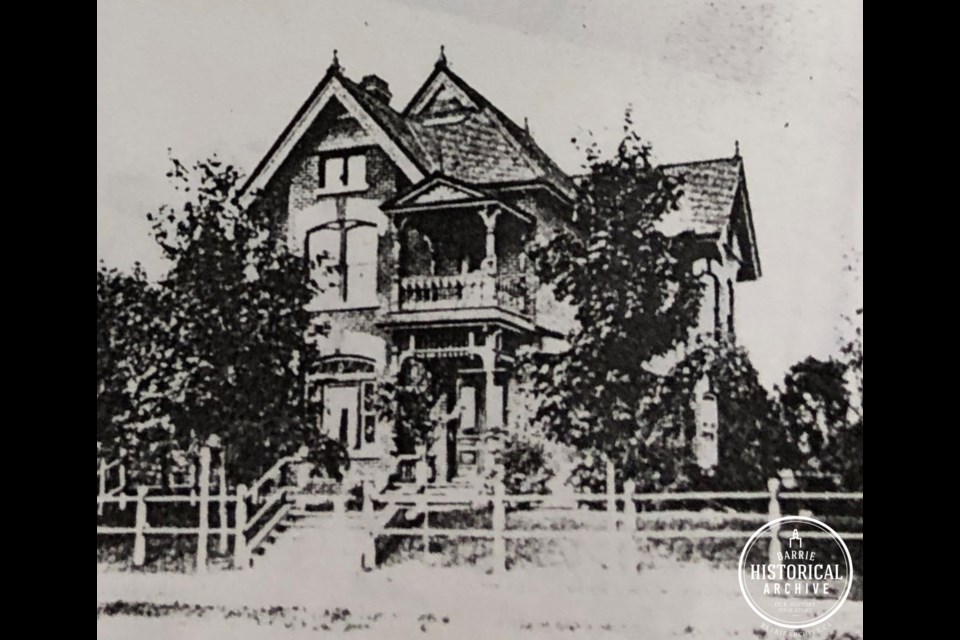This ongoing series from Barrie Historical Archive curator Deb Exel shows old photos from the collection and one from the present day, as well as the story behind them.
159 Owen St.
This gracious and stately home, located in the beautiful historic neighbourhood called The Grove, was built about 1893 for newlyweds William and Claudina (Hickling) Hunter.
William and Claudina were a couple of country kids: she of the Oro Hicklings, and he was born in Painswick. William and his family moved to town about 1883 and they lived in the same neighbourhood just a few blocks away at 121 Mulcaster St., from where he and Claudina would eventually reside.
William got his start in the dry goods business, apprenticing at E.B. Compton and Company before joining the Vair Dry Goods company.
By 1895, now partners, Vair and Hunter Direct Importers implemented a ‘cash-only’ policy in their store at 52 Dunlop St. E., effective Sept. 15 of that year. (Vair and Hunter was the successor to the Hunter, Sargeant and Company in 1892.)
In 1897, William and his brother B.W. Hunter struck out on their own, opening Hunter Brothers Men’s Wear, which operated until 1915. They had a huge going-out-of-business sale on April 24, offering loads of bargains and entertainment, whether you shopped or not, by the T.W. Sharpe Orchestra of Thornton.
The new company, W.C. Hunter Clothing Company, held an inauguration sale through May 22, including a contest to win a 1915 Touring Ford Automobile.
But that’s not all Hunter was involved in. One of a group of ‘players’ in the community looking for ways to boost Barrie’s industrial growth, Hunter, along with Nathaniel Dyment, J.C. Irwin (who bought out the B. Hinds store in 1898) and H.H. Strathy, came up with the idea of starting a carriage company.
In 1903, council approved an application for a loan from the Town of Barrie as outlined in an agreement between the town and the Barrie Carriage Company, passing a bylaw to grant the loan and the concessions requested. The Barrie Carriage Company received “a free site, exemption from taxes with the exception of school taxes for 20 years, free light and water privileges and the load of $20,000 for 20 years.”
Construction of the Barrie Carriage Company factory at the corner of Ellen and John streets (near where the Midway Diner is located today) got underway that same year.
Over the next few years, business boomed and the company had a demand for its product and the factory had created abundant employment.
Unfortunately, although the Barrie Carriage Company had plenty of orders, it was under-capitalized and could not fulfill customer demand… or pay its debt to the town.
The company faltered along. In 1910, buggy sales were up and the factory was busy through 1911. But without bigger, better factory premises and more equipment, and lacking additional support from the town, the Barrie Carriage Company could not meet the demand, and their newest product offering, the Barrie Bell, just added to their problems.
The Barrie Carriage Company went out of business in 1920.
On a more positive note, Hunter continued to be a successful merchant in the clothing business until his retirement in 1935. He and Claudina lived in their beautiful Owen Street home their entire married life and the house remained in the Hunter family until about 1966.
Even though some of the decorative, architectural detail has been removed over the years and other structural changes have been made, 159 Owen St., still retains much of its Gothic Revival beauty and features – obviously one of The Grove’s most well cared for jewels.



